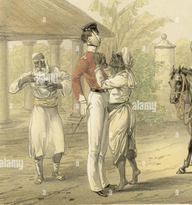Digital activism is more comfortable, isn't it?

Instagram and social activism; these two have been boldly bonded companions for the last two years. When you think of activism, the first thing that may pop into your head is those aesthetic carousel posts we see being shared on Instagram. Whilst, those posts do make a difference, they can’t be substituted for making concrete change, you know out in the real world.
Society is so infiltrated and sucked into this digital world that we forget that Instagram will not solve social issues. Yes, it aids in increasing our awareness and educating us on social issues in bite-size pieces of media, but it does more harm than good. Why?
Because society has birthed performative change and performative activism.
I like to think of performative activism as a form of activism used to increase one’s social capital or personal gain rather than genuine support towards a movement, issues, or causes.
Similar to performative activism, performative change is concerned with digitised change; and digitised change isn’t real change. Performative change places itself above the concrete transformation of societal and institutional progression. It serves the purpose of existing just for the sake of this notion;
“I reposted a carousel on X social issue, so I’ve done my part.”
Since 2020, the Instagram landscape has changed drastically. Social justice infographic slideshows have taken over the platform. From my favourite creators’ stories and to my classmate’s Instagram stories, I see 8.5 x 11-inch pastel backgrounds, plastered in trending phrases like; “Black Lives Matter”, “Stop AAPI Hate” and “White Silence is Violence”. These phrases are usually in loopy or inflated bubble fonts and beside them Pinterest like illustrations.
Performative activism looks like this; posting Black squares, reposting infographics just for the sake of appearing “woke” and using Instagram to share activism work, without you; the distributor understanding the post itself and implementing the call to action.
The fact of the matter is that infographic sharing has become trending, and when something trends it loses its value because of human nature naturally moving on to the next hot thing.
For instance, nowadays it's trendy to appear as if you are anti-racist. Truth is, being anti-racist should not be for Instagram. After all, the aim is not your public display of anti-racism; it needs to come from within and be implemented on the outside.
The main issue with performative activism is its DNA. It screams self-interest, and its phenotype illustrates trends and popularity. Performative activism isn’t real change, and we only continue to fuel it by entertaining it. Performative activism moves us backwards, change should be made outside, and it should not expire after 24 hours.
What makes performative activism and change so normalised is its comfortability factor. To some degree, change is frightening and making it appear as if you are a contributor to change through Instagram is far easier than doing the “real work”.
We are a part of this issue, and we need to broaden our view of activism; Instagram can only offer so much depth. There are multitudes of books, journals, documentaries, and sources you can look into to broaden your understanding of the flawed society we live in.
An integral part of making a difference beyond Instagram is self-evaluation. It is important to look at your own biases and recognise how they've shaped how you look at and treat others outside of your realm.















